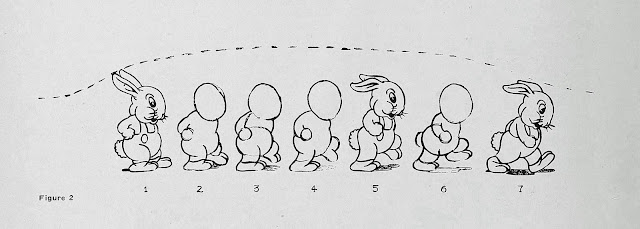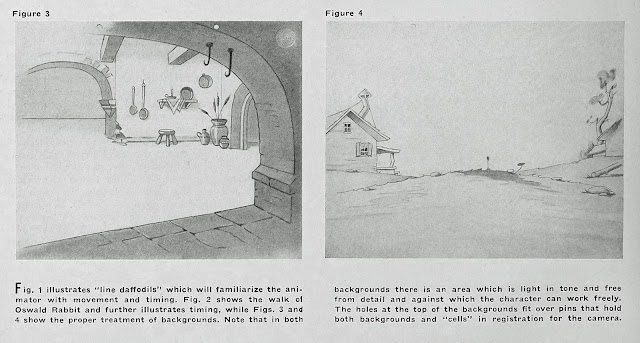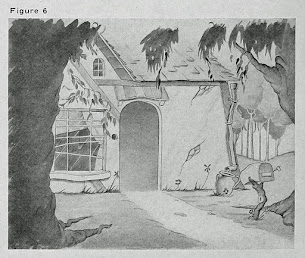When
Wacky Races debuted on a Saturday morning in fall 1968, I recognised the voice of the narrator within the first few seconds. Dave Willock was a likeable character actor who guested on all kinds of situation comedies through the ‘60s. He always seemed to be playing a mild, somewhat frustrated type (whether the Goldberg show in the 1960 ad to the right made it to air, I don’t know).
Little did I know way back then that Willock had a long show biz career at that point, dating back to the early 1930s. We’ll get to it in just a moment.
It’s nice to see character actors get a bit of ink in the national press and it happened to Willock when he landed a regular role in a forgotten 1961 sitcom called
Margie. TV had used up all the old formats from radio by that point and was looking for gimmicks.
Margie was one of those
Corliss Archer,
A Date With Judy shows about the life and “typical troubles” of an American teenaged girl. The gimmick was the show was set in the 1920s.
Here’s a syndicated newspaper story from October 11, 1961. It refers to Willock’s main TV notoriety to that date: the “Dr. Hobby” show that he started in Los Angeles in 1948 on KFI-TV and moved to KTTV the following April. Willock was the star but was soon upstaged by guest Cliff Arquette playing Charley Weaver, who became a regular. The two took the show to NBC, where it was cancelled after network boss Pat Weaver got the boot. The show has the distinction of being the spot for the TV debut of Cary Grant, who played a bum in a boxcar, uncredited, as a joke. (As an aside, Willock was the m.c. on KFI-TV’s first broadcast).
TV KEYNOTES
Willock Welcomes Role In Series
By HAROLD STERN
"When TV started in Hollywood, "Dave Willock sums up his career, I got in on the ground floor—and I stayed there for 15 years."
As if to prove this, Dave, who plays Harvey Clayton, Margie's father on "Margie," ABC's comedy series (set in the 1920's), assured me that, though he was born in 1909, this was one of the rare occasions on which he was not cast as a college boy.
"That's the story of my career," he said. "I've gone through life playing college boys and bellhops. I got to Hollywood in 1930, and, as luck would have it, my first role was that of a bellhop. From that point on, I was offered every bellhop role that came along. It go so, that I acquired a complete wardrobe of bellhop uniforms and I used them on all the lots."
After Dave had become established as "Mr. Bellhop" and America's oldest college boy, as a gag, a friend of his sent him over to the "Wanted Dead or Alive" office for a role. As a switch, Dave discovered the part was that of an 80-year-old drunk.
"I was delighted to get the part," he said, "but from then on I played nothing but 80-year-old drunks for months."
Actually, television has been a good thing for Dave Willock, who's been one of Hollywood's best and sturdiest supporting actors since he started. He had a running part on the Boots And Saddles series, and as he puts it:
"Appearing in Margie is a tremendous relief after all the westerns I've done. At least there are rags on the floors."
Perhaps his outstanding television achievement until now was the do-it-yourself television show he had several years ago.
It was on this series that Cliff Arquette's "Charlie Weaver" character was born. Dave asked Cliff to appear on the show in the old woman characterisation he had been using on television, but Arquette refused, saying he was saving that bit for an appearance on a major show in the near future. However, Arquette told Willock, so as not to spoil Dave's plans completely, he'd take a crack at playing an old man. The old man emerged as Charlie Weaver.
"We had a lot of fun working together," Dave reminisced, "and we were on the verge of becoming established as a fixture on the NBC schedule. But, just before we were supposed to move to New York to take over the Saturday morning extension of the Home Show, there was a big NBC shake-up, Pat Weaver left the company, and our show was finished.
This was probably one of NBC's biggest mistakes. The network has had no regular series as funny as the old "Dave and Charlie Show" since.
"Cliff and I still keep in touch," Dave remarked. "We're both nuts on the subject of the Civil War and I'm a bug on arts and crafts. As a matter of fact, I made a model of a Mississippi steamer a few years ago and I sold it for $2,000. I'm not working on another one and Cliff tells 'me he must have it!' He's already offered me $5,000 plus plane fare if I personally carry it to his Gettysburg museum when I finish it."
As a for-real do-it-yourself addict ("I'd rather build things in my garage than act."), Dave is happy that his character of Harvey Clayton in Margie is similarly inclined.
"I have a workshop on the show," he said, "where I invent things and then let everybody convince me I'm crazy. For example, on the show, I invent the idea of selling popcorn in theaters. I invent the teabag and lots of other things and each time I let my family talk me out of it."
He feels he's eminently qualified to play the role of the father of a teenager in the twenties.
"I was a teenager during that time," he noted. "I have five daughters of my own (and though he still could pass for a
juvenile, he has three granddaughters as well) and I think I'm aware of the problems facing teenagers—not that I've necessarily been able to solve them, but I am aware of them.
"Anyway," he concluded, "isn't it a relief to have a comedy series about the twenties instead of another crime show?"
Willock’s best buddy in Hollywood in the early days was actor Jack Carson. The two appeared in vaudeville together in the ‘30s. Willock was the best man at Carson’s wedding. Carson became the bigger name and fronted a show that toured military camps in California in 1942-43. Dennis Morgan was on the tour; Warners teamed Carson and Morgan in some movies. Carson got his own radio show for Campbell’s Soup on June 2, 1943 and Willock became a regular along the way.
Variety mentioned the name of Willock’s character in an edition about two months earlier, so it seems likely Willock played that character in an earlier show sponsored by Camel.
Tuned In magazine mentioned Willock in a story about Carson in its July 1946 edition.
Jack can thank Dave Willock for his present niche in radio and filmland. If it hadn't been for Dave, Jack might yet be selling insurance back in Milwaukee, as he was in 1931 after getting out of Carleton college [in Minnesota], when he ran into friend Willock. Willock had been fired from his job as announcer on a Milwaukee station.
Just like that Dave said: "Say we'd make a funny team. Let's go on the stage."
And just as casually, Jack replied, "Okay, why not?"
So the Mutt-and-Jeff team embarked on a vaudeville career in the midwest running from one night stands to split weeks and finally to big time.
"We told jokes, mostly," Jack recalled. "We couldn't do anything else. We couldn't sing, dance, or juggle. So we just told jokes—mostly corny."
After a couple of years they split up and Jack [eventually ended up in Hollywood]...
RKO offered him a contract. About that time he wired Willock, who was back east: "Run, do not walk to Hollywood. Bonanza! They pay $25 a day if you can speak a line."
Willock came and rapidly found a place for himself as a featured player. He appeared in some 60 pictures in one year, doing such roles as reporters, smart alec bellhops, college boys, soldiers, sailors, anything youthful.
Cartoon fans may think otherwise, but the show with Charley Weaver may have been his career highlight. Willock was shanghaied into a regular role in the disastrous 1969 shipboard comedy
The Queen and I (
Variety assured readers the “queen” was a ship and not Billy De Wolfe’s character) and later starred in a faded carbon copy of
The Flintstones called
The Roman Holidays in 1972. Four years later, he was the announcer on a talk show hosted by the voice of Garfield the cat, Lorenzo Music. Between shows, he made a living the same way as old radio types like Vic Perrin, Barney Phillips and Sam Edwards—doing commercial voiceovers. Willock appeared on camera for Stan Freberg’s spot for the Great American Soup Company, likely seen more on TV shows about commercials than as an actual commercial itself.
Willock was honoured with a star on the Hollywood Walk of Fame. Let’s face it. Willock wasn’t an A-list star by any stretch of the imagination. But he toiled long and successfully in radio and TV, and that deserves some recognition.


























































